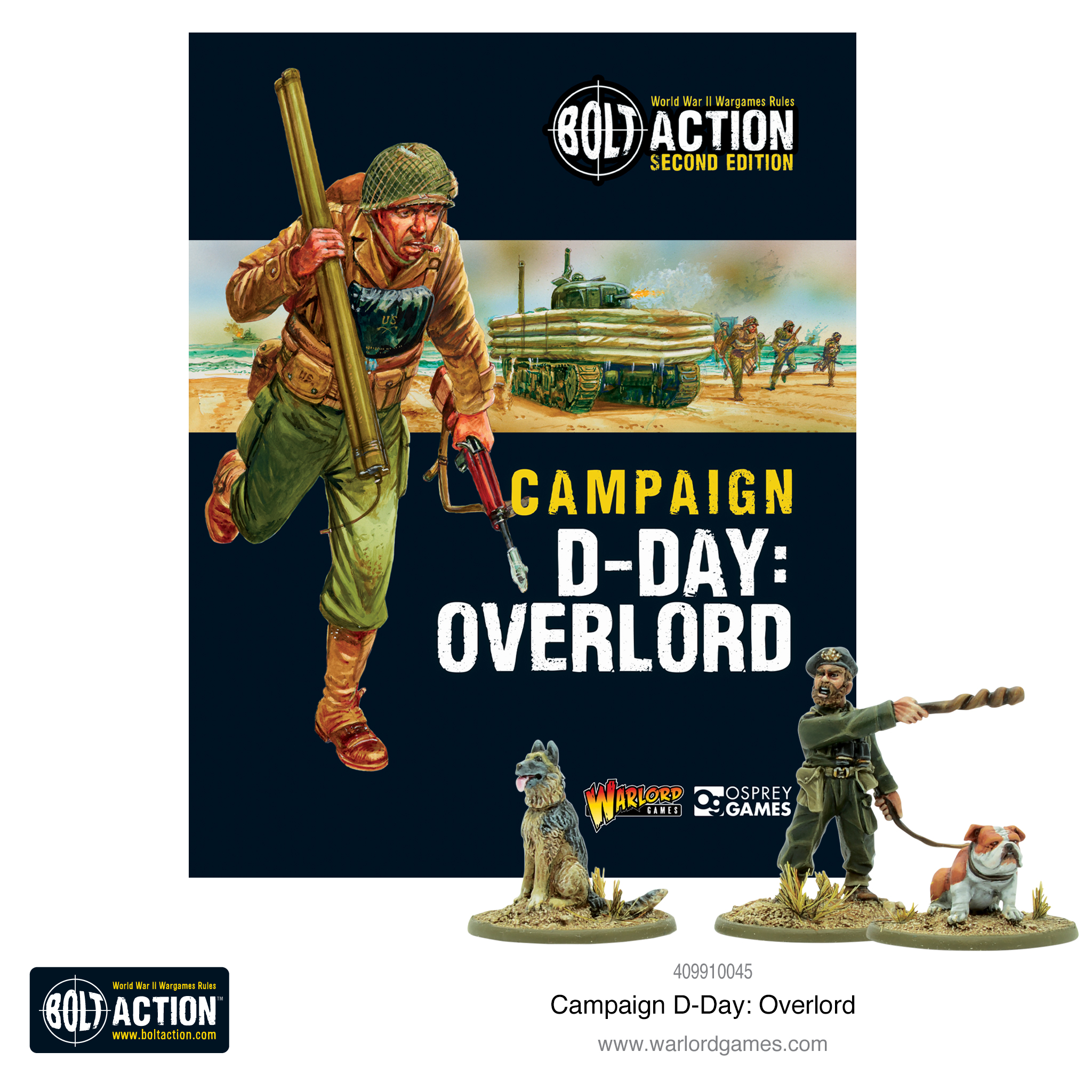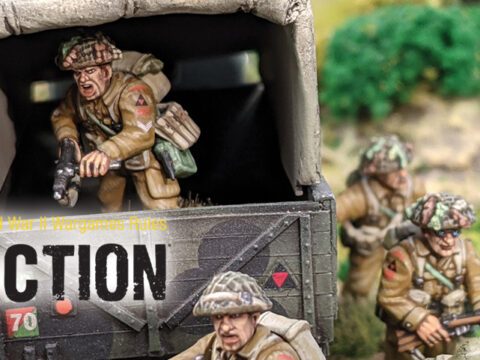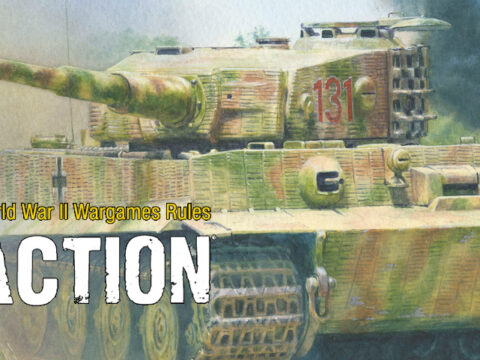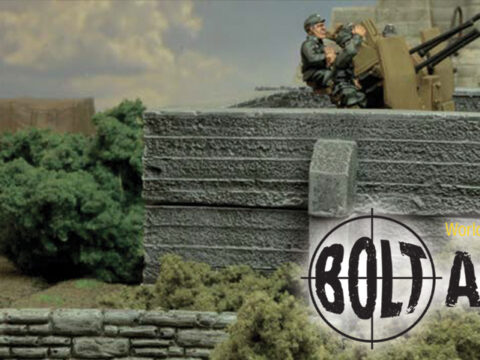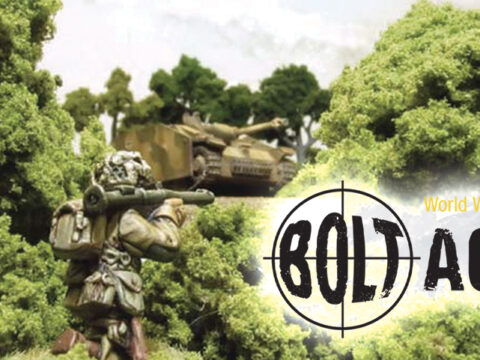The 7th Armoured Division, nicknamed ‘The Desert Rats’, found fame in their North African campaign, but they also played a vital role in the D-Day landings.

“Dear Desert Rats! May your glory ever shine! May your laurels never fade! May the memory of this glorious pilgrimage of war which you have made from Alamein, via the Baltic to Berlin never die!”
-Winston Churchill July 1945
Jerboa
The British 7th Armoured Division is one of the most famous ever to have served in the British Army. Born in the desert of North Africa before the outbreak of the war, it would go on to serve in every major theatre of the conflict, culminating in the invasion of Berlin. It was during their time in Africa that they adopted their nickname ‘The Desert Rats’.

British Armoured 7th Division ‘Desert Rats’ Insignia

A jerboa, colloquially known as a desert rat
Major-General Percy Hobart, on a visit to Maaten Bagush, spied a pet jerboa, to which he took a liking. Thus the nickname was born. His successor’s (Major-General Michael O’Moore Creagh) wife produced a sketch to serve as the shoulder flash, based on a captive jerboa at Cairo Zoo.
Prior to D-Day
Upon the Italian entry into the war, the 7th Armoured Division, though their tanks were outdated, were sent as part of the Western Desert force. It was fortunate that Italian forces were similarly hampered, with their equipment and methodology not much updated since the First World War. Able to defeat the Italians, they were then forced to face the far more deadly Afrikakorps, under the command of Erwin Rommel. You can read more in-depth about the Africa campaign here. From Africa, the Division pushed through to Italy, though slightly behind the main invasion at Salerno.
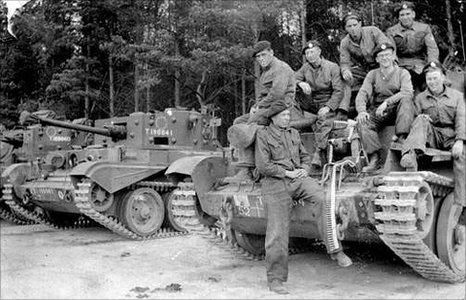
Elements of the 7th Armoured Division take part in training prior to the Normandy Assault, at Thetford Forest, Spring 1944.
However, In November 1943, the division left Italy for the United Kingdom; with the last units arriving on 7 January 1944. They trained primarily in Thetford forest, in preparation for the Normandy invasion. At this time, the division received new equipment in the form of new Cromwell Cruiser tanks and 36 Sherman Vc Fireflies. This meant that each troop had a complement of 3 Cromwells and 1 seventeen-pounder firefly. It was the only division to utilise Cromwells as their main battle tank.
D-Day and Beyond
The 7th armoured division was one of a trio of follow up divisions for the Normandy landings. Most of the division had landed by 7th June at Gold Beach. Their initial role was to participate in operations Perch and Goodwood, in support of the push for Caen. However, a change in plans meant that the 7th Armoured Division engaged in fierce engagements against tanks of the Panzer-Lehr-Division and the Heavy SS-Panzer Battalion 101 in the Battle of Villers-Bocage, around a week after landing.
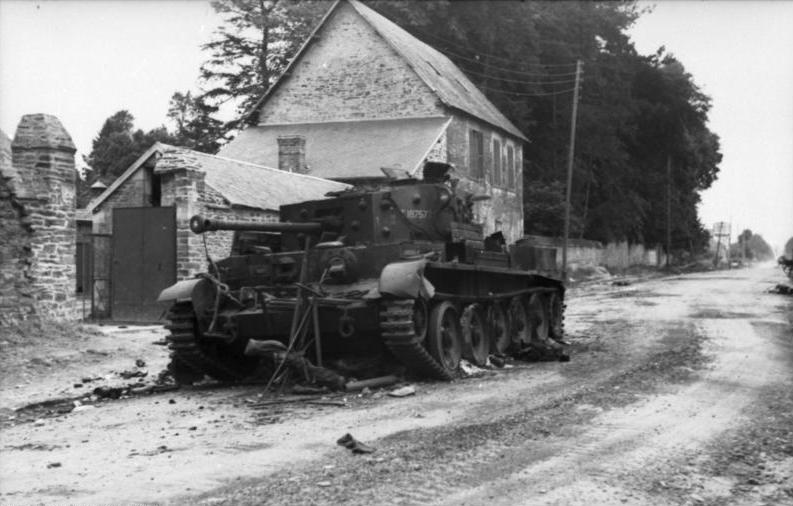
The wreck of a Cromwell Tank At Villers Bocage
It was here that the advance towards Caen stumbled. Though they inflicted heavy losses on the German Panzer forces, a seven-mile withdrawal was ordered. This remains a controversial battle in the history of the campaign and resulted in the reassignment of the 7ths Commanders (Erskine & Hinde).
Thereafter, the Division took part in Operation Spring, designed to bog down the Germans and facilitate the American launch of Operation Cobra. Operation Goodwood followed in support of the American breakout. After the Battle of the Falaise Gap, in which the bulk of German forces in Normandy were destroyed, the 7th Armoured Division took part in the larger advance to Paris and the Rhine.
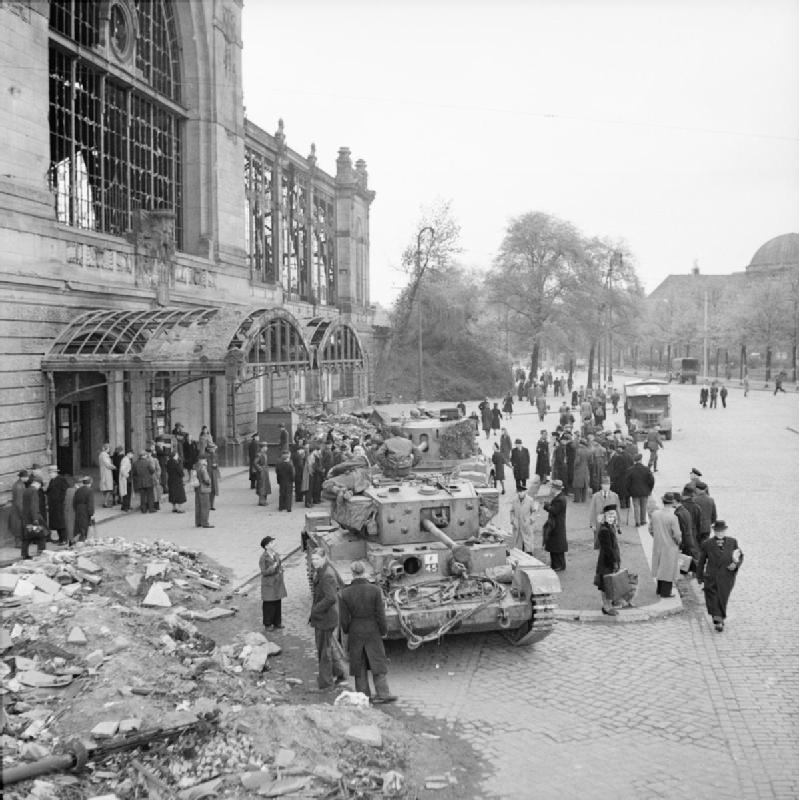
Cromwell and Challenger tanks outside Hamburg Dammtor Station May 1945
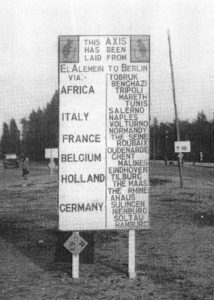
At its HQ in Berlin, the Division erected a signpost showing its route in the war.
After Normandy
The division surged through Belgium, liberating Ghent, and into Holland, piling pressure on the Maas. In March 1945, the division crossed the Rhine and faced fanatical opposition from SS and Hitler Jugend forces. It fought its way through the suburbs of Hamburg, before finally accepting the city’s surrender on 3rd May 1945.
There was one final duty to perform. The ‘Desert Rats’ were ordered to Berlin to take part in the victory parade on 21st July 1945, in front of Winston Churchill. He later addressed the division – inducting it into the ‘Winston Club’.
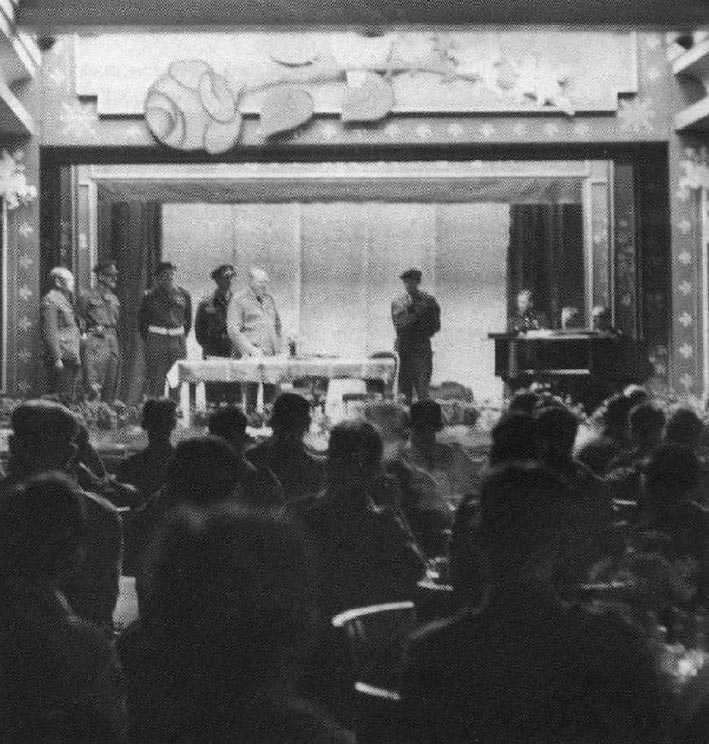
Winston Churchill addresses some of the Division during the opening of the ‘Winston Club’ in Berlin.
Tanks of the 7th Armoured Division in Normandy
Cruiser Tank Mk VIII Cromwell
Armed with a potent 75mm gun the Cromwell was more than a match for the venerable Panzer IV! It was introduced in 1944 and was also known as the A27 or Cruiser MK VIII. Originally, the armament was to be the 6-pounder, but this was changed to a new British designed 75mm gun. This could use American ammunition, which made supply easier in the European theatre of operations. Combined with its Meteor engine, it could outrace similarly armed and armoured panzers.
Each troop of the 7th Armoured Division would be equipped with three of these.
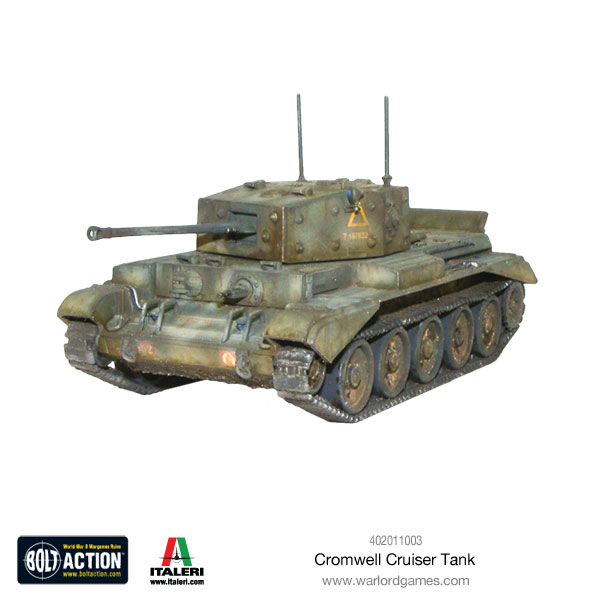
Sherman Firefly VC
Bane of the heavy German armour, the Sherman Firefly was the British invention that mounted the powerful seventeen-pounder anti-tank gun in a Sherman V. It is a variant of the American Sherman. It soon became highly valued as the only British tank capable of defeating the Panther and Tiger tanks it faced in Normandy at standard combat ranges. In recognition of this, German tank and anti-tank gun crews were instructed to attack Fireflies first. Between 2100 and 2200 were manufactured before production wound down in 1945.
Often known as the ‘Charlie’ tanks in the field because of the ‘c’ denoting them as rearmed with the seventeen-pounder. There were enough of them by D-Day to issue 1 per troop, providing the British with an answer to the threat of the German big tanks. Nearly the equivalent of a tank sniper, the Firefly could easily penetrate any target from 1000m away, even making Tiger tanks cautious of their next move if they know a Firefly is on the prowl.
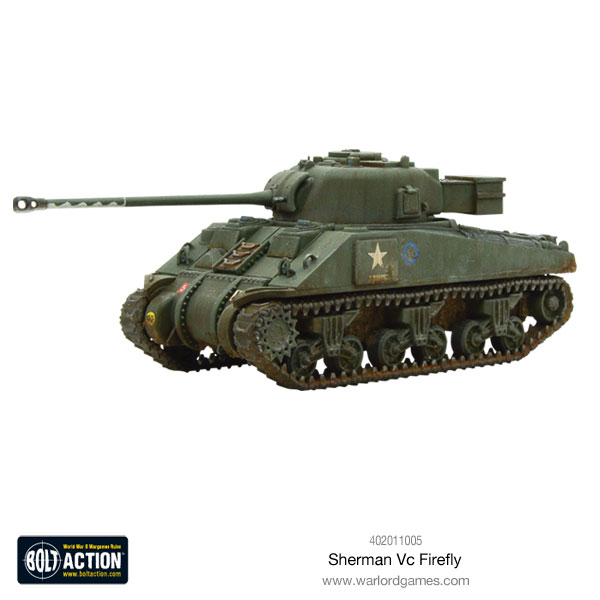
Building a Desert Rats Armoured Division
Forming a nearly perfect armoured task force unit, the bundle contains:
- 4 Cromwell Cruiser Tanks
- 1 Sherman Firefly Vc
- An A5 Tank War Mini Rulebook
- British Unbrigaded Tank Regiment tactical markings – white decal sheet
- British Stowage Pack
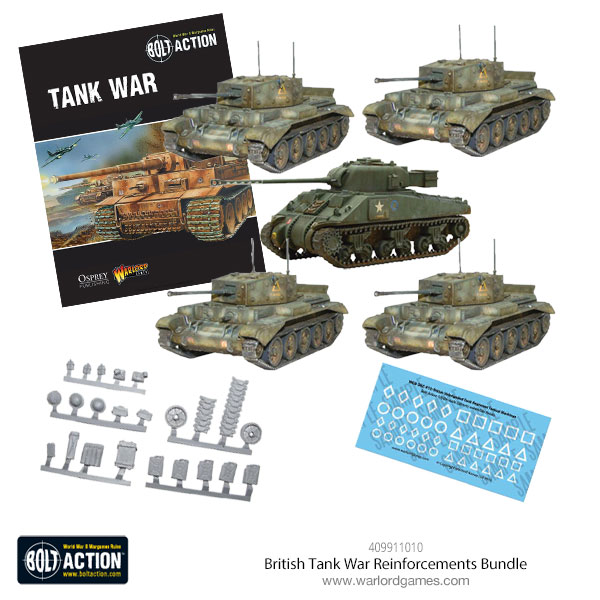
D-Day: Overlord
Interested in finding out more about the allies’ Normandy campaign? With over 200 pages this Campaign Book, written by Robert Vella, allows players to take command of both Allied forces assaulting the beaches and inland defences and those of the axis manning such fortifications. Packed with new, linked scenarios, rules, troop types, and Theatre Selectors providing plenty of options for novice and veteran players alike.
